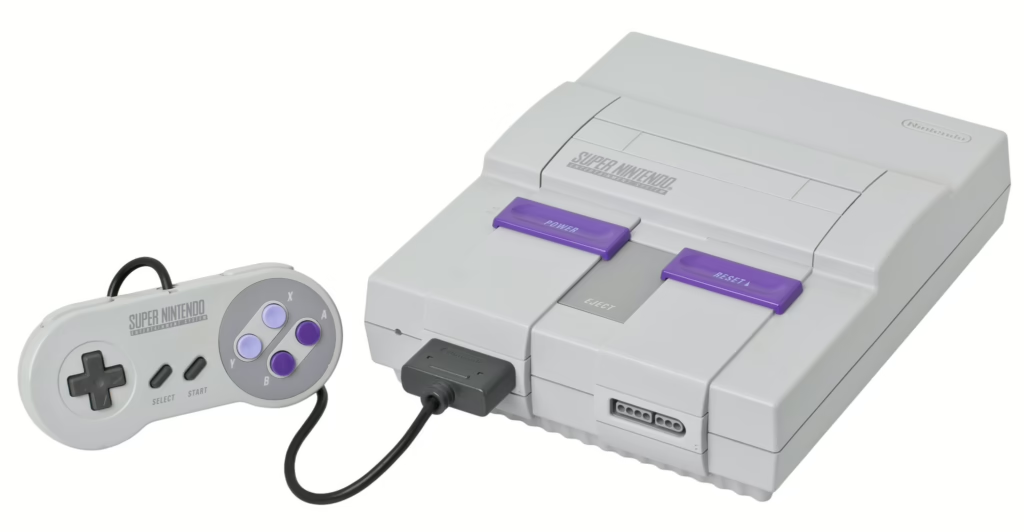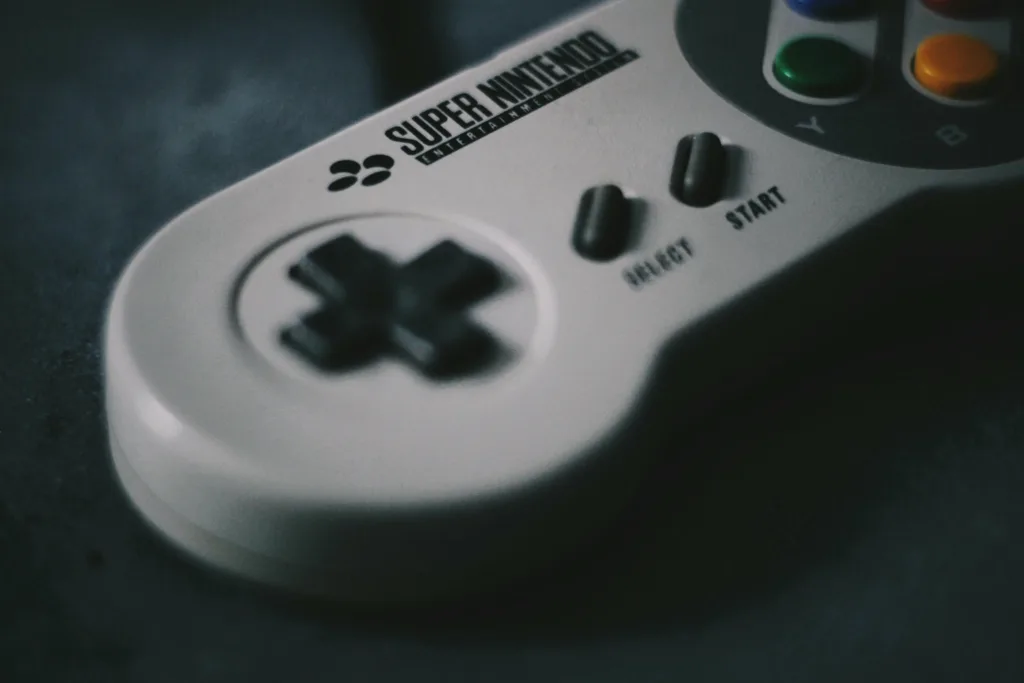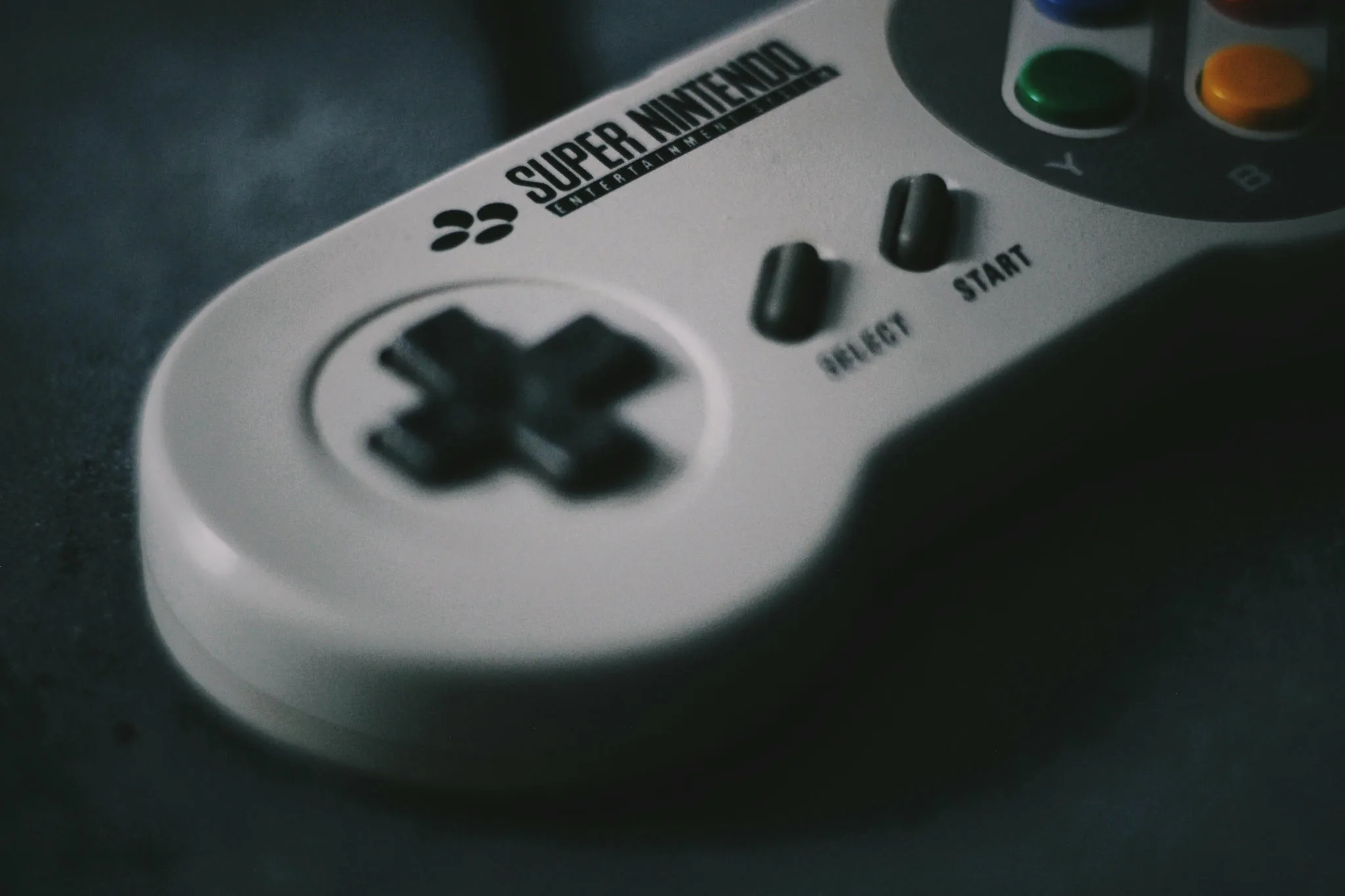The Super Nintendo Entertainment System (SNES), also known as the Super Famicom in Japan, is one of the most iconic home gaming consoles in the history of the video game industry. Released by Nintendo in Japan in November 1990 and in North America in August 1991, the SNES played a pivotal role during a time when the gaming market was still recovering from the crash of 19 83. Renowned for its 16-bit architecture, the console offered advanced graphics and sound that rivaled the arcade machines of its era, cementing its status as a cornerstone of the gaming world.
Its legacy includes beloved classics such as “Super Mario World,” “The Legend of Zelda: A Link to the Past,” and “Donkey Kong Country”. In recent years, SNES mods have gained significant traction among enthusiasts and professionals within the gaming community. These modifications vary widely, ranging from aesthetic enhancements and performance upgrades to functional improvements. Aesthetic modifications often involve tidying up internal wiring and adding cosmetic touches to restore or personalize the console’s appearance.
Performance enhancements may include integrating modern multi-core processors for smoother emulation of demanding titles, which is particularly valuable for speed runners who require flawless performance and additional debugging features.
The modding community, supported by online forums and social platforms, plays a crucial role in the evolution of these practices. Collaboration among enthusiasts has led to the sharing of development tools and user feedback, ensuring the continuous improvement and accessibility of modification techniques.
However, SNES mods are not without their controversies. Legal and ethical issues arise concerning the preservation of gaming history and the potential infringement of copyright laws through the unauthorized reproduction and distribution of games. Moreover, some collectors view modifications as detrimental, fearing the loss of the original hardware’s value and authenticity. Despite these challenges, the vibrant modding community and technological advancements continue to propel the SNES into the future, maintaining its relevance and appeal for both nostalgic gamers and new generations alike.

History of super nintendo entertainment system (SNES)
The Super Nintendo Entertainment System (SNES), also known as the Super Famicom in Japan, marked a significant milestone in the history of home gaming consoles. Released by Nintendo in Japan in November 1990 and subsequently in North America in August 1991, the SNES quickly became a cornerstone of the gaming industry. This revolutionary console emerged at a critical time when the video game market was still recovering from the crash of 1983.
The SNES was a substantial upgrade from its predecessor, the Nintendo Entertainment System (NES), both in terms of graphics and processing power. The console’s 16-bit architecture enabled it to deliver more advanced graphics and sound, providing an experience that rivaled arcade machines of the time.
Notably, the SNES introduced a controller with a four-button layout, which has become a standard feature in modern gaming controllers.
Upon its release, the SNES saw immediate success, with 300,000 units sold within hours in Japan, prompting the Japanese government to request future console launches to be scheduled on weekends to prevent public disturbances.
The initial game library for the SNES was modest, with titles like “F-Zero,” “Pilotwings,” and “Super Mario World” available at launch in Japan. American gamers had a slightly expanded selection, including “Gradius III” and “Sim City” when the console debuted in the West.
This feature, along with the SNES’s ability to deliver rich and immersive gameplay, ensured its place in gaming history. The SNES continued to demonstrate its relevance in the market even as competitors moved towards more advanced 32-bit systems. In 1994, the release of “Donkey Kong Country” showcased the SNES’s ability to compete visually and technologically with newer consoles, proving that the system still had much to offer.
Decades after its release, the SNES remains a beloved console, admired for its innovation and the cultural impact it had on the gaming industry. Its legacy is evident in the design and functionality of modern gaming consoles, and it continues to be a source of nostalgia and inspiration for gamers around the world.
Importance of modifications
Modifying the Super Nintendo Entertainment System (SNES) retro console has garnered significant attention from both enthusiasts and professionals in the gaming community. These modifications range from aesthetic enhancements to performance upgrades, each contributing uniquely to the user experience.
Aesthetic enhancements
One of the primary reasons for modifying an SNES console is to refine its aesthetic presentation. This includes tidying up visible wiring, ensuring that all components are neatly arranged, and considering additional cosmetic enhancements to elevate the console’s visual appeal. Such meticulous attention to detail not only preserves the nostalgia associated with the original hardware but also showcases the owner’s ingenuity and technical prowess.
Performance improvements
Enhancing the performance of the SNES through modifications is another critical aspect. With advancements in technology, modifications can involve integrating powerful multi-core processors, allowing for smoother emulation of more demanding SNES titles.
This is particularly important for speed runners who rely on flawless performance and additional features like built-in debuggers to analyze gameplay and improve their strategies. Performance optimization, including techniques like frame skipping, ensures the smoothest possible gameplay experience, essential for maintaining the speed and accuracy required in action-packed titles

Functional upgrades
Functional upgrades can involve transforming classic SNES controllers into USB-compatible devices, thereby merging retro gaming nostalgia with modern technology. This transformative process not only revitalizes a cherished gaming artifact but also highlights the modder’s resourcefulness and adaptability. Such projects demonstrate the potential for repurposing existing devices to suit contemporary needs and preferences, offering a personalized and innovative gaming experience.
Community and legacy
The community’s role in SNES mods is pivotal. The rise of social platforms and forums has bolstered collaboration among enthusiasts, allowing for the gathering of resources, sharing of development tools, and providing user feedback that guides the evolution of modification techniques and emulation software.
This communal effort ensures that the legacy of the SNES and its iconic games endures, making these vintage experiences accessible to future generations.
Types of SNES mods
Hardware modifications
Retro gaming enthusiasts often seek to improve the video and audio output quality of their SNES consoles through various hardware modifications. Original SNES models, especially early revisions, are known for producing a relatively blurry video signal due to the use of two video chips, which apply a form of low-pass filtering.
To address this, one popular modification is the installation of an RGB bypass, either using the on-board S-RGB amplifier or a dedicated THS7374 RGB bypass board, which is easier for beginners to install and produces superior video quality.
Additionally, the SNES Mini, or SNES Jr., requires a modification to enable RGB output. The installation of three 1.2k resistors on the RGB lines is recommended to bring the output to optimal levels, as detailed in several guides.
Furthermore, some enthusiasts address inherent noise issues present in stock consoles by installing additional bypass capacitors. This can help mitigate random noise and specific issues like the line in the middle of the screen caused by DRAM refresh.
Restoration and maintenance
Restoration projects aim to bring old SNES consoles back to their former glory by addressing common issues such as dirty contacts and internal dust buildup. Essential tools for this process include rubbing alcohol, Q-tips, compressed air, and specialized screwdrivers.
For example, opening the SNES case and thoroughly cleaning both the power switch and the internal components can resolve many operational issues and extend the console’s lifespan.
Popular tools and equipment
Modifying a Super Nintendo Entertainment System (SNES) console often requires specific tools and equipment to ensure a successful and clean installation. This section outlines some of the most commonly used tools, categorized by their purpose and function.
Modding tools
A variety of specialized tools are necessary for modding cartridge-based games and consoles. Although high-end tools can be beneficial, many successful modifications have been accomplished using inexpensive, older tools.
Game tools
To access the internal components of the SNES and its cartridges, specific game tools are essential.
- 3.8MM Game Tool: Used for NES and SNES games, among others.
- 4.5MM Game Tool: Necessary for SNES and some Genesis games, as well as opening SNES and N64 systems.
- Tri-wing screwdriver: Required for handheld systems and opening the Wii.
Basic tools
A standard set of basic tools is indispensable for most modifications:
- Philips head screwdriver: Used in nearly every mod.
- Large pliers: Occasionally handy.
- Wire strippers or cutters: Necessary for preparing wires.
- Dental tools: Useful for working in tight spaces.
- Mini cutters and pliers: Essential for almost every mod.
Wire and ribbon wire
For most mods, using stranded ribbon wire is recommended due to its insulation and clean installation. Kynar wire is also used, although it is brittle and has minimal shielding.
Multi-meter
A basic multi-meter is helpful for diagnosing electrical issues. There is no need for an expensive model; a simple, affordable one will suffice.
Desoldering gun
Desoldering can be challenging without the right tools. High-quality desoldering guns, such as those made by Hakko, are considered some of the best. More affordable knockoffs are also available and can perform adequately
Soldering equipment
A good soldering station can make a significant difference in the ease and quality of your work.
- Soldering Station: A reliable soldering station simplifies the process.
- Iron Tips and Stand: Ensure you have the right tips and a sturdy stand for your iron.
- Iron Removal Pad: Useful for cleaning the iron tip.
- Tip Cleaners: Keeping the soldering iron tip clean is crucial for effective soldering
Solder and flux
Solder and flux are crucial components for any mod. Beginners should use flux on everything to ensure strong connections. Over time, you will learn which components specifically require flux
Interesting hardware and acquired tools
In addition to the tools listed above, other hardware may be desirable for more advanced projects:
- Cartridges with enhancement chips: Useful for various advanced mods.
- PAL SNES modded to play 60Hz NTSC: An example of a modified console.
- NTSC games: Often required for testing and usage
Soldering techniques and tips
Soldering small components, like the pins on the “S-RGB A” chip, requires precision and the right technique.
- Using heat shrink tubing to keep wires together and prevent shorts.
- Tinning each pin and wire before soldering.
- Adding flux to pins before
Notable projects and modders
Rgb mods
RGB mods are popular among enthusiasts who aim to achieve the best possible video signal from their Super Nintendo Entertainment System (SNES) while maintaining an aura of authenticity by using original hardware. These modifications are recommended for beginners as they require some research into video signal types, making them a great introduction into more advanced console modifications.
Voultar’s Edge-enhancer
Hardware modder Voultar has developed the “Edge-Enhancer” mod for the SNES, focusing on optimizing the output of the 2CHIP SNES’ Digital-Analog Converter (DAC) for modern TVs. This mod, showcased by the gaming YouTube channel “My Life in Gaming,” has received impressive results. The latest prototype is ready for production, and retail sales are expected soon on Voultar’s website.
Voultar emphasized the need for a new sharpening mod due to the limitations of existing high-pass filter mods, which often result in color modifications and visual noise. The “Edge-Enhancer” aims to provide superior image sharpening without these drawbacks. Interested individuals can follow Voultar’s YouTube channel and website for updates on availability and pricing.
Region-free and dejitter mods
Modder Duncan Deals offers fully built modded consoles featuring several enhancements. One notable project is the SuperCIC board, developed by Peter Bartmann (borti4938) and Ikari_01. This mod allows the SNES to be region-free and switch between 50Hz and 60Hz, enabling users to play imported games seamlessly. Another significant mod is the dejitter mod by Markus Hiienkari (marqs85), which resolves sync issues when capturing footage with a capture card or using scalers like the OSSC.
Community and support
The modding community is a valuable resource for both beginners and seasoned modders. Websites and forums offer extensive guides, tool recommendations, and support for various modding projects. Tools for opening cartridge-based games and consoles, such as the 3.8MM Game Tool, are affordable and essential for most modding tasks.
Additionally, YouTube channels and social media accounts provide tutorials and updates on the latest developments in the modding scene.
Resources and communities
Tutorials and user guides
ConsoleMods.org is another collaborative community focused on collecting and preserving the knowledge of console modifications, repairs, and restoration. They offer a wealth of information and support through their sub-wikis and active Discord channel, fostering a sense of camaraderie among enthusiasts.
Retro gaming community
The retro gaming community plays a significant role in the resurgence of interest in classic consoles like the SNES. Online forums, social media groups, and gaming conventions bring retro gamers together to share their love for the classics. These communities provide platforms for discussion, trading, and showcasing collections, fostering an environment of support and knowledge-sharing.
Enthusiasts are always ready to help each other with troubleshooting, repairs, and recommendations, adding to the overall appeal of retro gaming.
Ethical and legal issues
The modification of Super Nintendo SNES retro consoles raises several ethical and legal concerns. While enthusiasts often modify these consoles to enhance their performance or to enable them to play a wider variety of games, these actions can potentially infringe on copyright laws. The reproduction and distribution of copyrighted games without the permission of the rights holder is illegal and considered piracy.
This practice not only violates intellectual property rights but can also result in legal action against individuals who engage in such activities. Another ethical consideration involves the preservation of gaming history. Collectors and enthusiasts who modify or alter original SNES hardware and software may inadvertently destroy valuable artifacts. This concern is especially pertinent for rare and historically significant items that could be lost to future generations if improperly handled. The rise of retro gaming has led to a heightened awareness of the importance of preserving gaming history. Specialized stores and online platforms have emerged to cater to this market, offering repair and restoration services to ensure that vintage games and consoles remain playable and intact.
Moreover, the act of modifying these consoles can sometimes result in the voiding of warranties and a decrease in the value of the original hardware. Collectors seeking to maintain the authenticity and value of their collections may view modifications as detrimental. Therefore, it is crucial for individuals to consider the potential long-term impact of their actions on both the legal landscape and the preservation of gaming history.
Future of snes modding
The landscape of SNES mods continues to evolve, driven by both technological advancements and the vibrant community of enthusiasts dedicated to preserving and enhancing this classic console.
Technological advancements
With rapid progress in technology, SNES mods has become more accessible and impactful. Modern modding kits, such as the SNES Jr THS7374 RGB Upgrade Kit, allow users to amplify an RGB signal from a New-Style SNES (often referred to as a SNES Mini or SNES Jr). This mod effectively connects unused video outputs on the SNES’s PCB and routes them to the Multi-Out, enabling the console to output an RGB video signal for enhanced visual quality.
Such advancements in modding technology not only improve the console’s performance but also help maintain its relevance in the modern gaming landscape.
Enhanced performance and graphics
Another significant development is the improvement of emulation techniques. Emulators benefit from powerful multi-core processors, allowing for smoother experiences even with more demanding SNES titles.
Community contributions
The SNES mods scene thrives on community support and collaboration. Online forums and social platforms facilitate the sharing of resources, development tools, and user feedback, which are crucial for the continuous evolution of modding and emulation software
The open-source movement also plays a vital role, as it allows enthusiasts to contribute to emulator development, fostering an inclusive environment for improvements and innovation
Professional modders
Professional modders like Voultar have also contributed significantly to the scene. Voultar’s work on the “Edge-Enhancer” mod for the SNES, which optimizes the console’s Digital-Analog Converter (DAC) for modern TVs, showcases the potential of professional contributions to enhance retro gaming experiences.
Such high-quality mods are often showcased on platforms like YouTube, where their impressive results garner attention and anticipation from the community.
Snes mods Future directions
As technology continues to advance, so too will the capabilities of SNES mods. Future modding endeavors are likely to focus on further improving video and audio quality, increasing the accuracy of emulation, and ensuring that the SNES remains playable on modern displays.
The collective efforts of both the community and professional modders will ensure that the SNES remains a beloved and enduring piece of gaming history.

